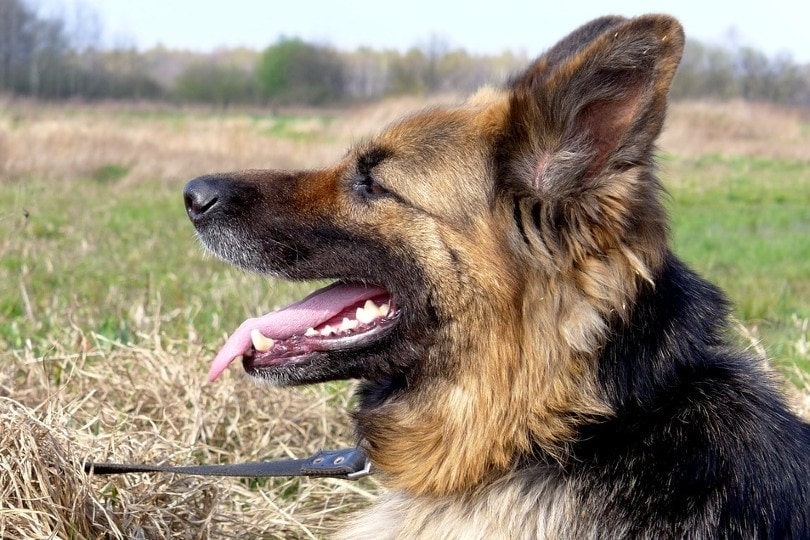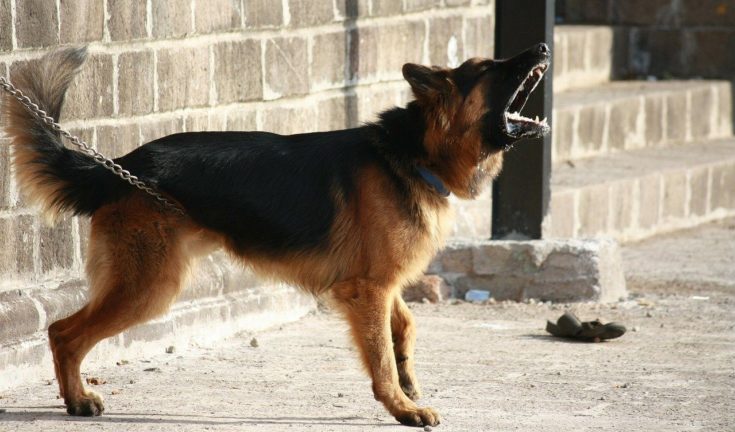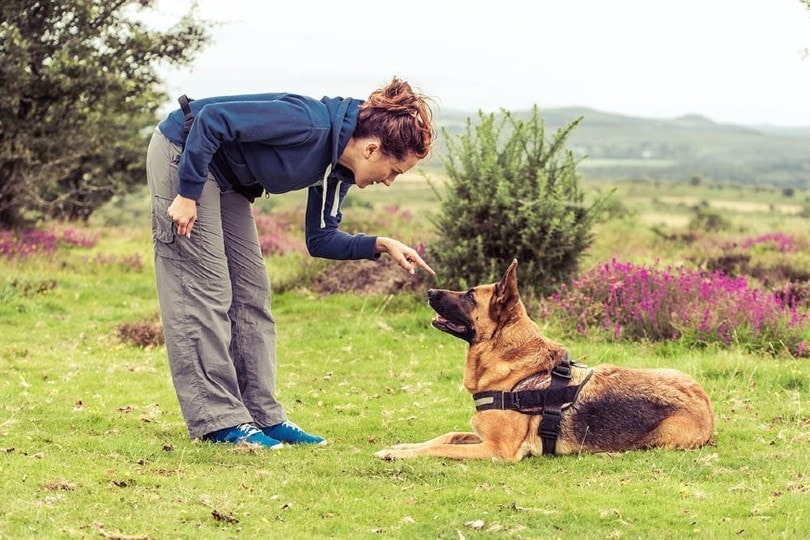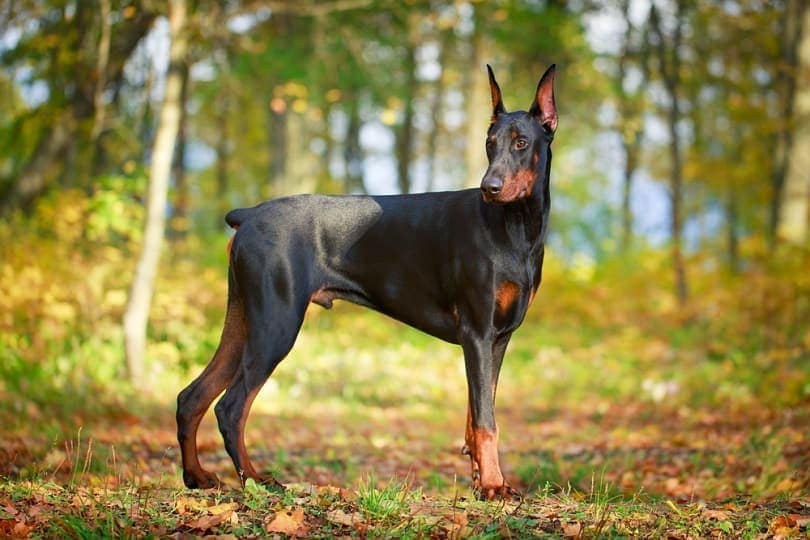How Strong Is a German Shepherd’s Bite Force? PSI Data

Updated on

When talking about German Shepherds, one of the first things people think of is their intelligence and loyalty. The force of their bite is often the furthest thing from our minds. While this dog is easily one of the most beloved in the world, it is also one of the most dangerous when not adequately controlled.
If you’ve often wondered about the power behind the German Shepherd, the most popular police dog, we have the answers you’ve been looking for. The German Shepherd bite force PSI (pounds per square inch) is a powerful 238. This lands the German Shepherd on the list of the most powerful bites in the canine world. Read on below to learn more about PSI, German Shepherds, and why their bites are so dangerous.
What Is Bite Force?
Understanding the meaning of bite force will give you a better understanding of how dangerous dogs can be. The bite force is the strength behind a dog’s bite to its victim. This level of pressure determines the level of injury inflicted on a target. The more power in the bite force, the more damage inflicted. A German Shepherd’s bite force is powerful enough to break human bones with one bite.

How Is Bite Force Measured?
As mentioned above, the German Shepherd’s bite force PSI is 238. PSI stands for pounds per square inch. This measurement is used to calculate the pressure placed on a point. When using it for dogs and their bite force, it measures the pressure a dog’s jaws apply when biting. By using PSI, scientists and dog experts can gauge the bite force of the strongest dogs in the world.
The Force Behind the German Shepherd Bite
The German Shepherd is ranked twelfth on the bite force scale compared to other breeds. While this shows that other dogs are stronger and have a more dangerous bite, it also tells us the German Shepherd should not be taken lightly.
With a PSI of 238, the German Shepherd can easily hurt or kill a human if they attack. Considering this breed is also ranked third for the most aggressive dog breeds in the world and fifth on the list of dogs with the strongest jaws, it is a reason for worry. German Shepherds have been linked to fatal attacks and should be considered dangerous in certain settings.
Why a German Shepherd May Bite
While the German Shepherd may be a dangerous dog, they can also be the most loyal. A German Shepherd can be docile, protective, and loving with proper training. This is why so many families bring them into their homes.
The number of German Shepherd attacks is relatively low compared to their population worldwide. This is partly due to the German Shepherd’s intelligence and training ability. Worrying about their bite force should not be an issue if the owner takes the time to properly train, care, and spend time with their German Shepherd.
Lack of training may cause a German Shepherd to attack, but in most instances, their aggression doesn’t come into play until they protect their loved ones. Their fierce loyalty often leads to attack when they feel their families are in danger. If you hope to avoid these issues, keeping your German Shepherd well-controlled and well-trained is imperative.

The Most Powerful Bite Force in the Canine World
You may be wondering which breed has the strongest bite force. That distinction goes to the Kangal, which has an impressive bite force of 743 PSI. Luckily, this dog is not considered dangerous and has historically used their powerful bite to protect against large predators in Turkey, where they originated. The Kangal is becoming popular in the United States due to its impressive appearance.
The German Shepherd as a Working Dog
The German Shepherd is often associated with being a police dog. Due to their powerful bite force and easy trainability, police officers around the world enjoy making the dogs their partners.
On the job, German Shepherds are expected to be obedient. Their extensive training is designed to help them take orders from their partners and reserve their powerful bites until needed. When ordered, however, a German Shepherd police dog will leap into action and use their power to take down criminals and protect the officers at their side.
How to Avoid a German Shepherd Bite
Now that you know the power behind a German Shepherd’s bite, you may be wondering how to avoid being bitten by one. The answer to this question is simple: training. With proper training and love, a German Shepherd brought into the home can be your family’s best friend.
With the high intelligence of the German Shepherd, training can be easy. By teaching your pet to obey commands and listen to your orders, their aggressive side can become a thing of the past. This is one of the greatest benefits of having a German Shepherd as a part of your family.

Does Bite Force Make a Dog Dangerous?
Luckily, the bite force of a dog, even a German Shepherd, doesn’t make the breed inherently bad. Yes, any dog can be aggressive, but that doesn’t mean they can’t make wonderful pets. By showing a dog the love and affection they deserve, you shouldn’t worry about the bite force. Simply take your time making friends with your new pet, train them well, and provide the same love they give you daily.
Related Reads:
- Do German Shepherds Like Water? Do They Like to Swim?
- How to Stop Your German Shepherd from Barking
- The History and Origin of German Shepherd Dogs
Featured Image Credit: Christel SAGNIEZ, Pixabay













